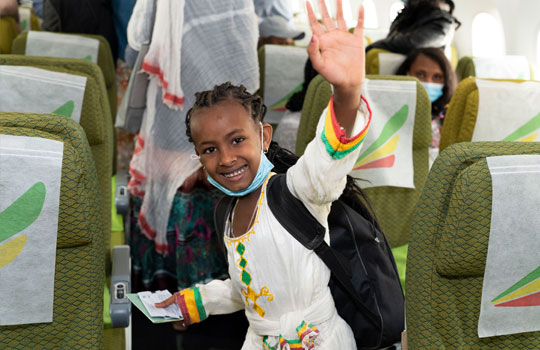In Gondar, Ethiopia, earlier this week, I met a family of six living in a tiny one-room apartment.
Once home to Ethiopian royalty, Gondar today is a deeply impoverished city, with streetlamps that don’t turn on at night because electricity is spotty, and crater-filled roads that in certain places resemble the surface of the moon.
Improbably, Gondar is also home to a Jewish community center. Yes, it’s undeniably basic — with dirt floors, some of it open air and other parts covered with flimsy corrugated metal roofing. But it has many of the functions of a traditional JCC: a large community room doubling as a synagogue, kitchen, small library with Judaic books, and even a mikvah. Colorful drawings of Israeli flags, stars of David, and Hebrew and Amharic quotes from the Torah adorn the walls. Most important, the center is regularly used by thousands of people of every age. On the day I was there, the first of the Hebrew month of Sivan, many hundreds had gathered in the synagogue for the special Shacharit (morning prayer) service welcoming the new month.
Gondar is also where Ethiopians — like the family of six I visited — have waited for years to travel to Israel.
Speaking through an interpreter, the father, Demeke, explained that 25 years ago his parents had left their rural Ethiopian village, traveling to Gondar with the hope of making aliyah. Fifteen years ago, Demeke’s parents alone qualified to make aliyah and left for Israel. He hasn’t seen them since. Showing me a dated picture of his father that occupies a prominent place in their apartment, Demeke explained that his father lives in Beit Shemesh and is now very sick. The separation has weighed terribly on the entire family.
But no longer. I’m happy to report that just yesterday this family of six flew to Israel. Their wait is over.
Adding poignancy to the experience, my daughter Avital accompanied me, joining a group convened by the Jewish Federations of North America and the Jewish Agency for Israel. We came to bear witness to the second wave of “Operation Zur Israel,” which began with flights of Ethiopian olim to Israel in 2020 after years of political negotiations. Tenaciously overseeing the current operation is Israel’s Minister of Immigrant Absorption Pnina Tamano-Shata, the first Ethiopian woman to serve in Knesset, and a champion for family reunification.
This week, my daughter and I traveled on one of the two flights that brought 340 Ethiopians to Israel, part of a total of 3,000 Ethiopians who are expected to be brought within the next six months by our partner the Jewish Agency — with UJA’s support. (Notably, our New York federation has been the largest single philanthropic funder of the Jewish Agency for many decades.)
The oldest passenger on this week’s flights was 81, the youngest just one month old. Some were terrified to be on a plane for the first time. Others understandably anxious for what comes next. But there was a sense of celebration and elation throughout the four-hour flight. And I will never forget the emotion of touching down at Ben Gurion, with the raucous clapping and the singing of “Haveinu Shalom Aleichem.”

